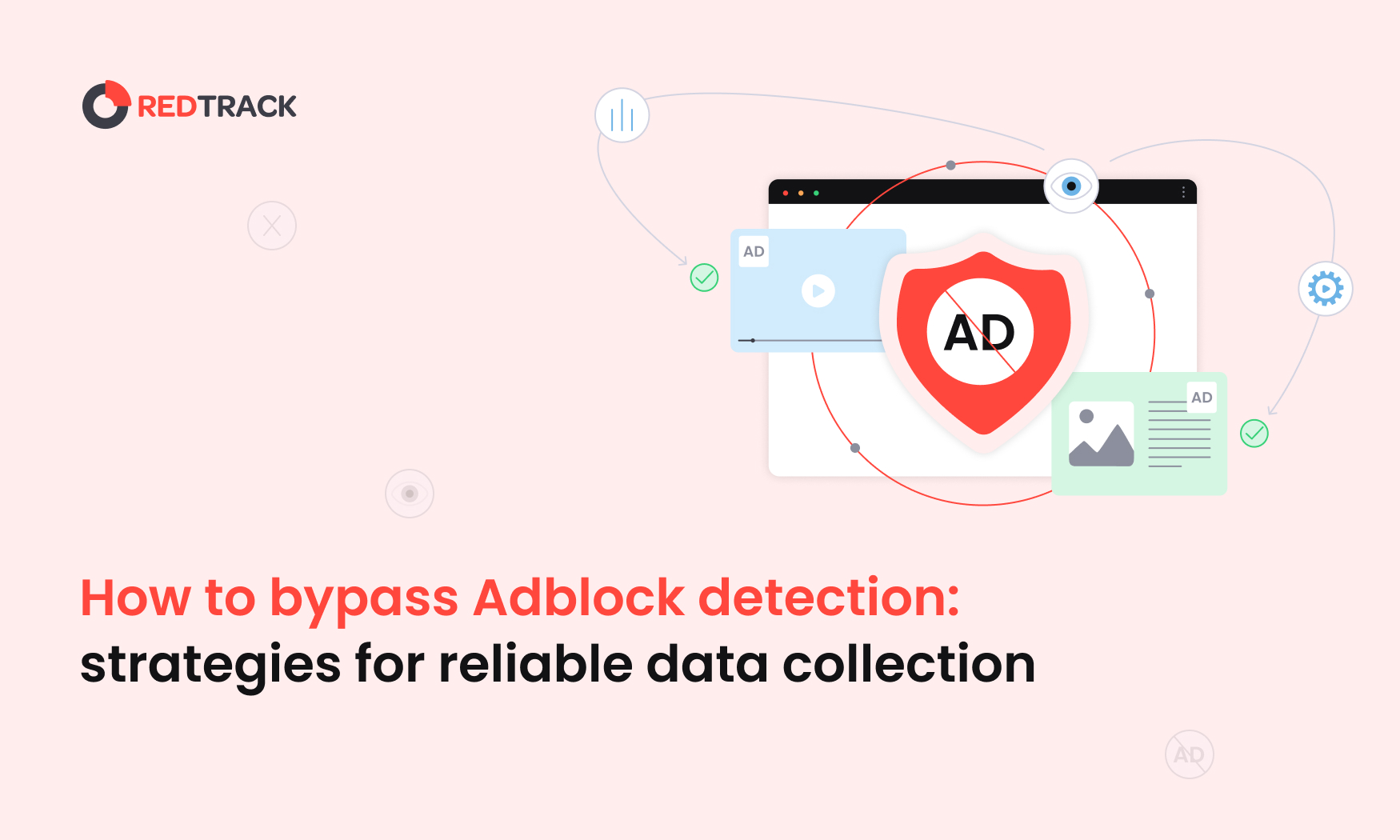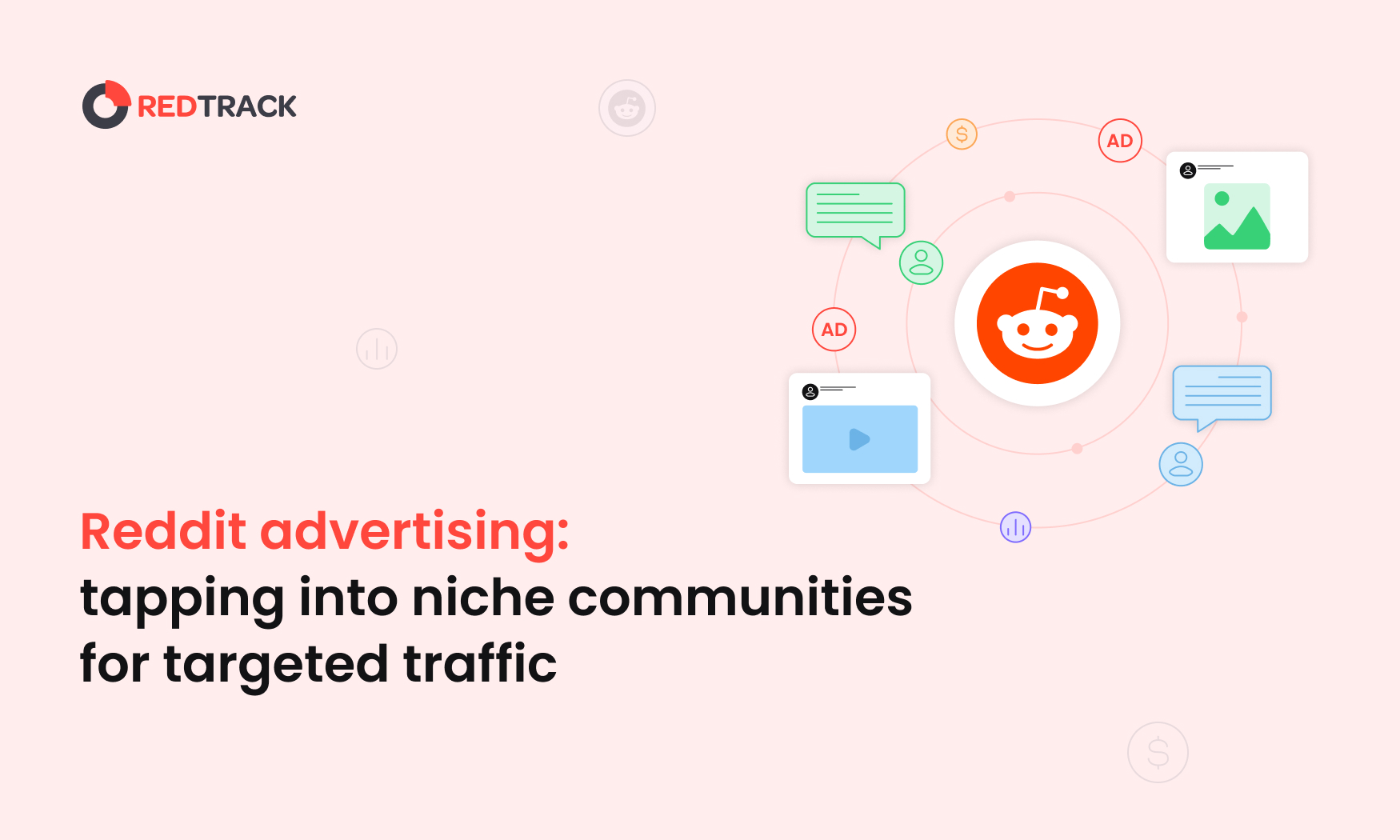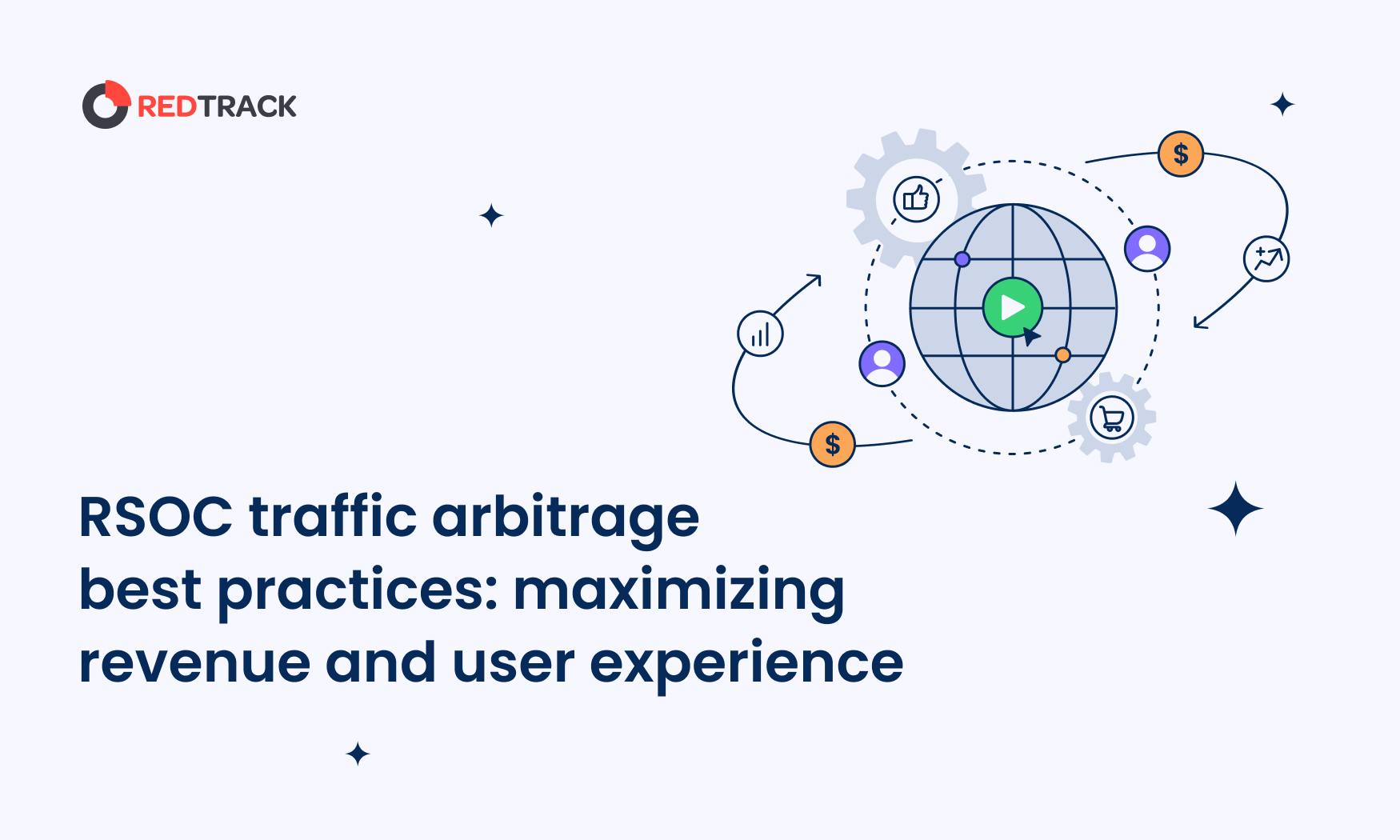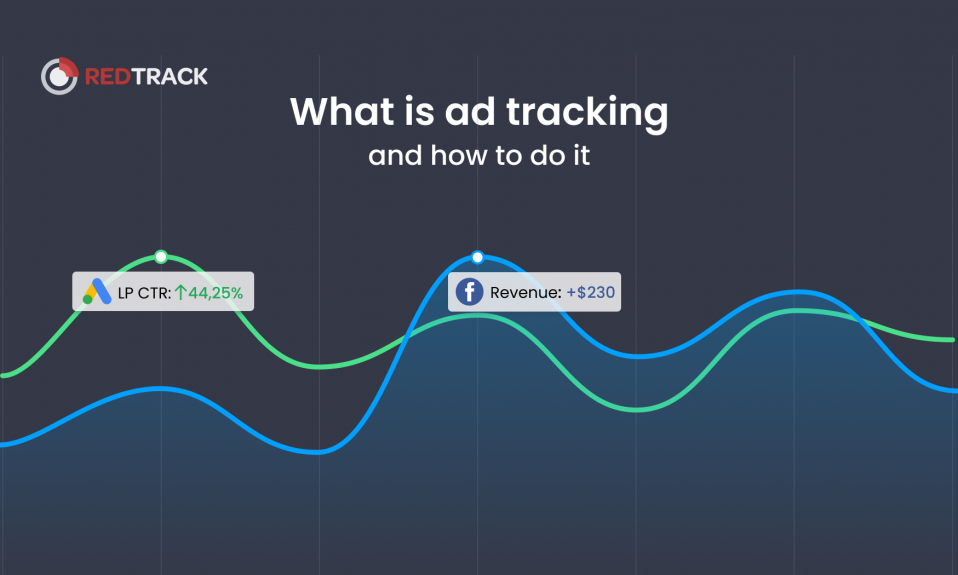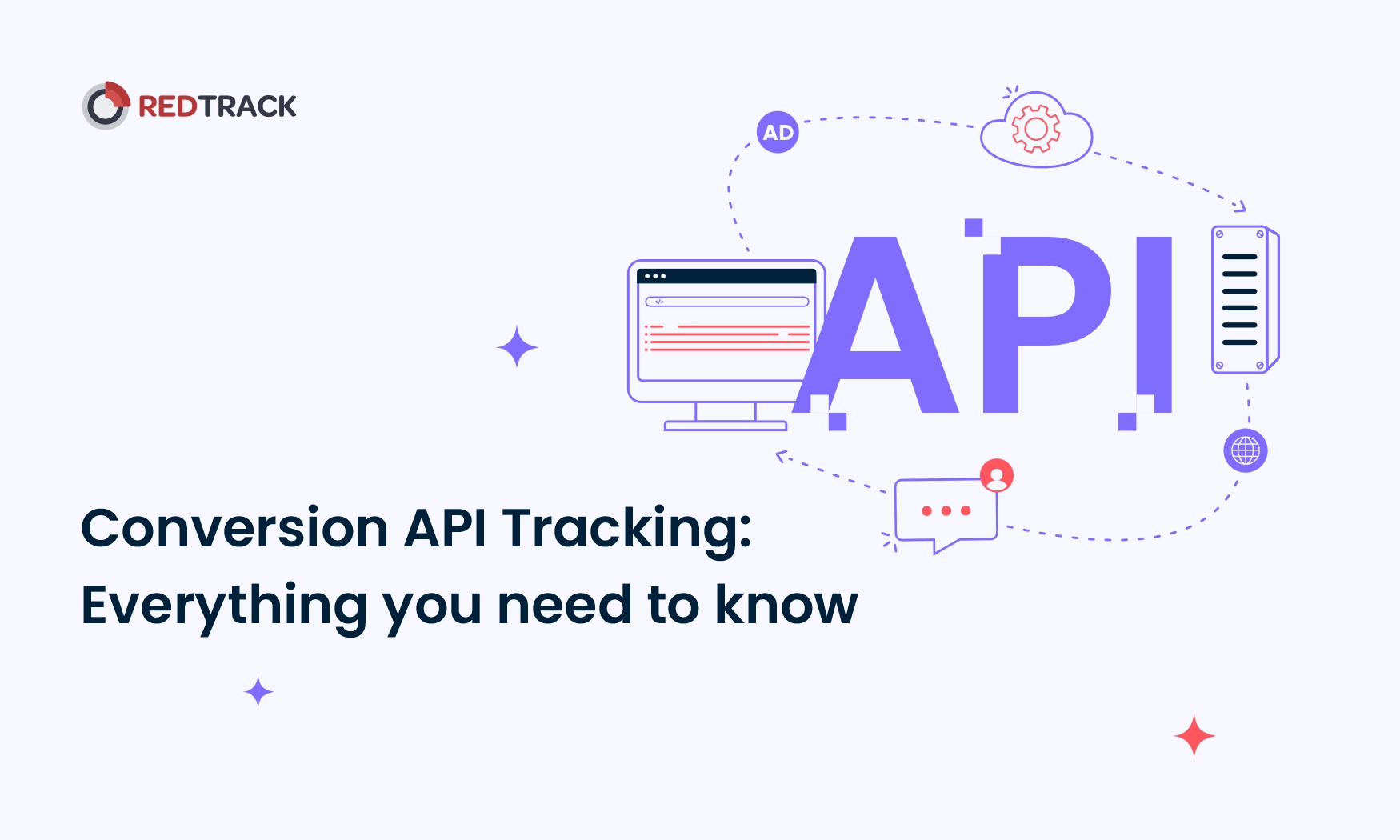
How to improve the media buying experience, and not put user privacy at risk? In the current digital landscape, it can be complicated. Conversion API tracking offers a seamless bridge between marketing efforts and tangible results. With a spotlight on privacy and precision, we will explore how this technology is reshaping digital advertising, and answer your top questions:
- What is Conversion API tracking, and how does it work?
- What are the benefits of Conversion API tracking, and what to watch out for?
- Which ad platforms support Conversion API?
- How to set up Conversion API for ad campaigns, and what are the ways to make maximum of it?
So, let’s get into it.
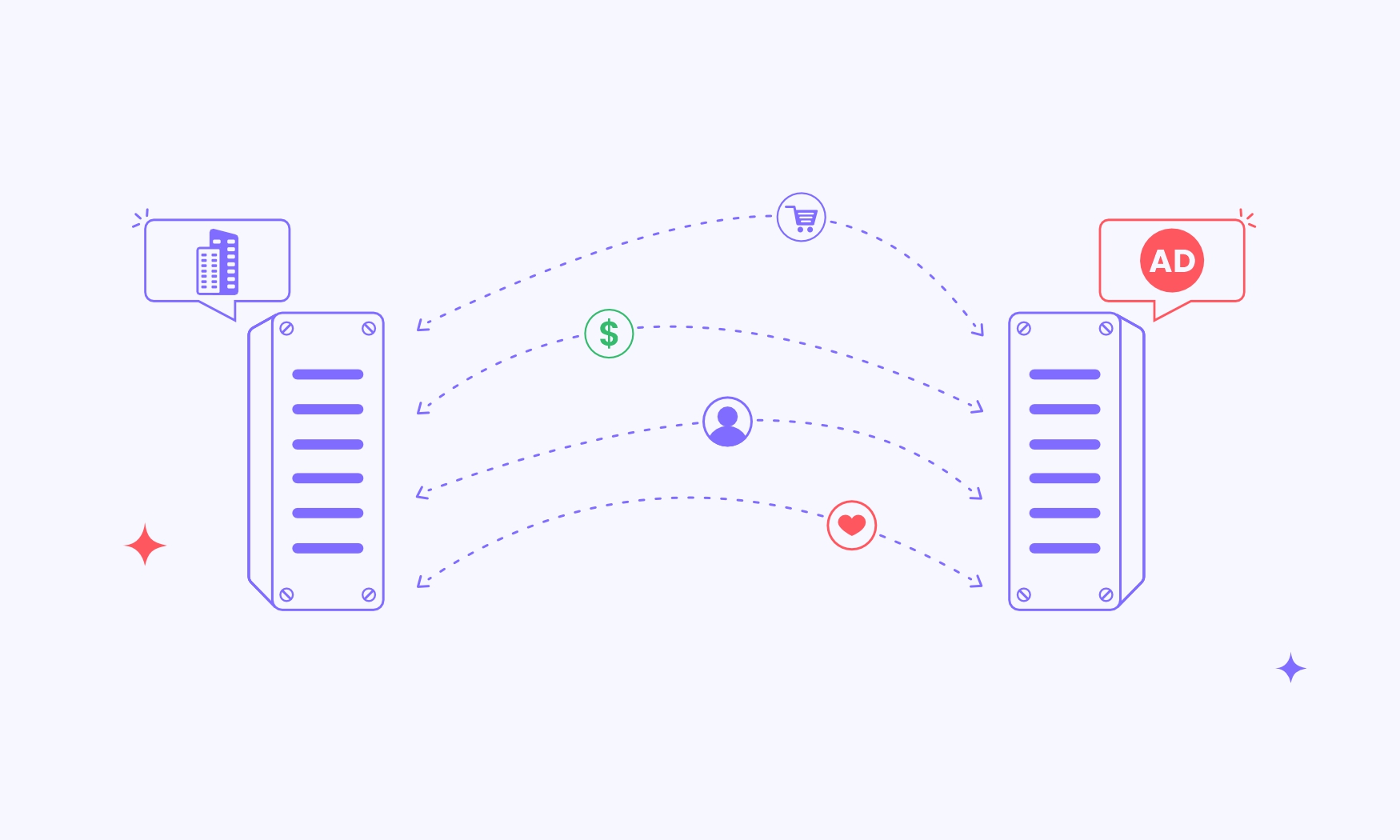
What is Conversion API tracking?
Conversion API tracking is essentially a smarter way for businesses to keep an eye on how well their ads are doing. Instead of using old methods that miss key details because of browser or privacy issues, this method sends data directly from your company’s server to the ad platform’s server. This gives you a better view of what’s happening, like sales or sign-ups, because of your ads. It avoids the usual online problems and privacy worries, giving you a clear picture of how well your ads are doing.
How does conversion API tracking work?
Conversion API tracking operates through an S2S communication channel, a more reliable and privacy-compliant method compared to traditional client-side tracking mechanisms like cookies.
Imagine someone clicks on your advertisement and then does something important on your site, like buying something or signing up for your newsletter. This action sets off what’s known as a conversion event within your website’s system. Instead of counting on a pixel on the web browser to catch this event – which might not work if someone is using an ad blocker or if the browser has tough privacy settings – your server picks up on this activity directly.
Next, your server puts this event information into a neat package, often using a format called JSON, and sends it over to the ad platform’s server with something called an HTTP POST request. This step is carried out using the ad platform’s Conversion API, a special tool built for handling these kinds of data transfers from one server to another.
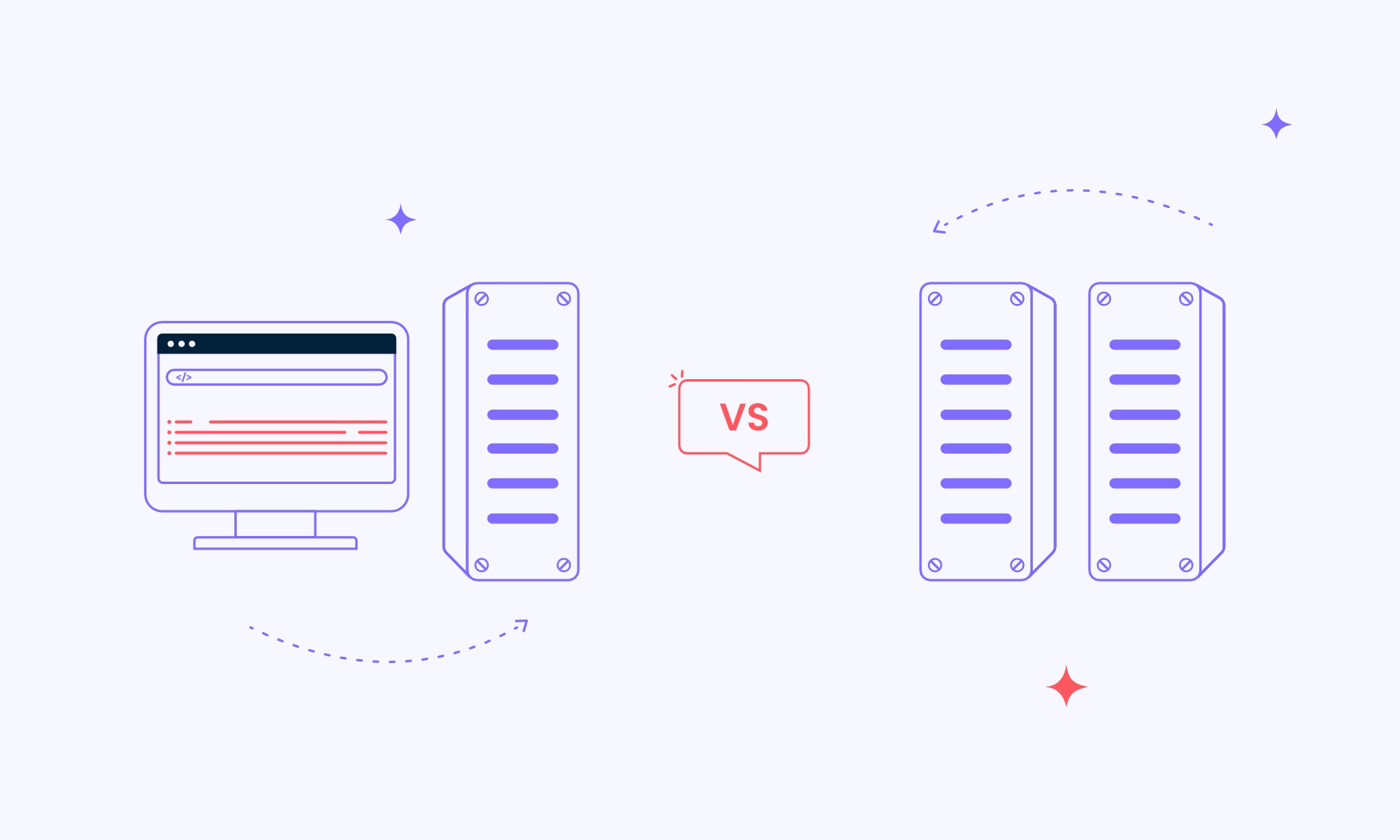
Conversion API tracking alternatives
To appreciate the innovation behind Conversion API tracking, it’s essential to understand its predecessors:
- Pixel Tracking: Relies on a small piece of code (the pixel) embedded on a webpage, which signals a server when a page is loaded. While effective, its reliance on browsers makes it vulnerable to cookie restrictions and ad blockers, leading to data loss and inaccuracies.
- Postback Tracking & S2S Tracking: These methods facilitate data exchange between servers after a specific action is completed. They offer improved data security and accuracy but need more direct integration and comprehensive data capture of Conversion API.
See our post on Tracking Pixel and S2S Postback URL tracking.
With the advent of Conversion API tracking, marketers now have a solution that combines the best of both worlds: the comprehensive data collection of pixel tracking and the reliability and privacy compliance of server-based methods.
Benefits of Conversion API Tracking
When you look closer, the benefits of this approach are even more evident:
- Privacy First: With laws like GDPR in Europe impacting over half a billion internet users and CCPA in California, the server-side method of the Conversion API prioritizes user privacy in data tracking.
- Bypass Ad Blockers: With 42.7% of internet users worldwide using ad blockers, traditional data collection is often compromised. The Conversion API sidesteps these issues, offering a complete picture of user activities.
- Unified Customer Journey Tracking: As users frequently switch among an average of 3.6 devices, keeping track of their journey can be challenging with old methods. The Conversion API connects these dots, offering a cohesive view across devices and platforms.
- Instant Data Insights: The Conversion API enables real-time data sharing, allowing advertisers to adapt to trends and adjust campaigns for optimal performance quickly.
- Tailored Tracking: This approach lets advertisers customize and monitor various actions specific to their objectives, such as online purchases or lead captures, ensuring the data is precisely what they need.
- Secure Data Transfer: Direct server-to-server data transmission reduces the chances of interception, keeping sensitive customer information safe and secure.
Drawbacks of conversion API tracking
While Conversion API tracking offers numerous advantages, it’s not without its challenges. Technical complexity and integration issues can pose significant hurdles. However, by leveraging documentation provided by ad platforms and possibly partnering with technology providers like RedTrack, advertisers can navigate these challenges successfully.
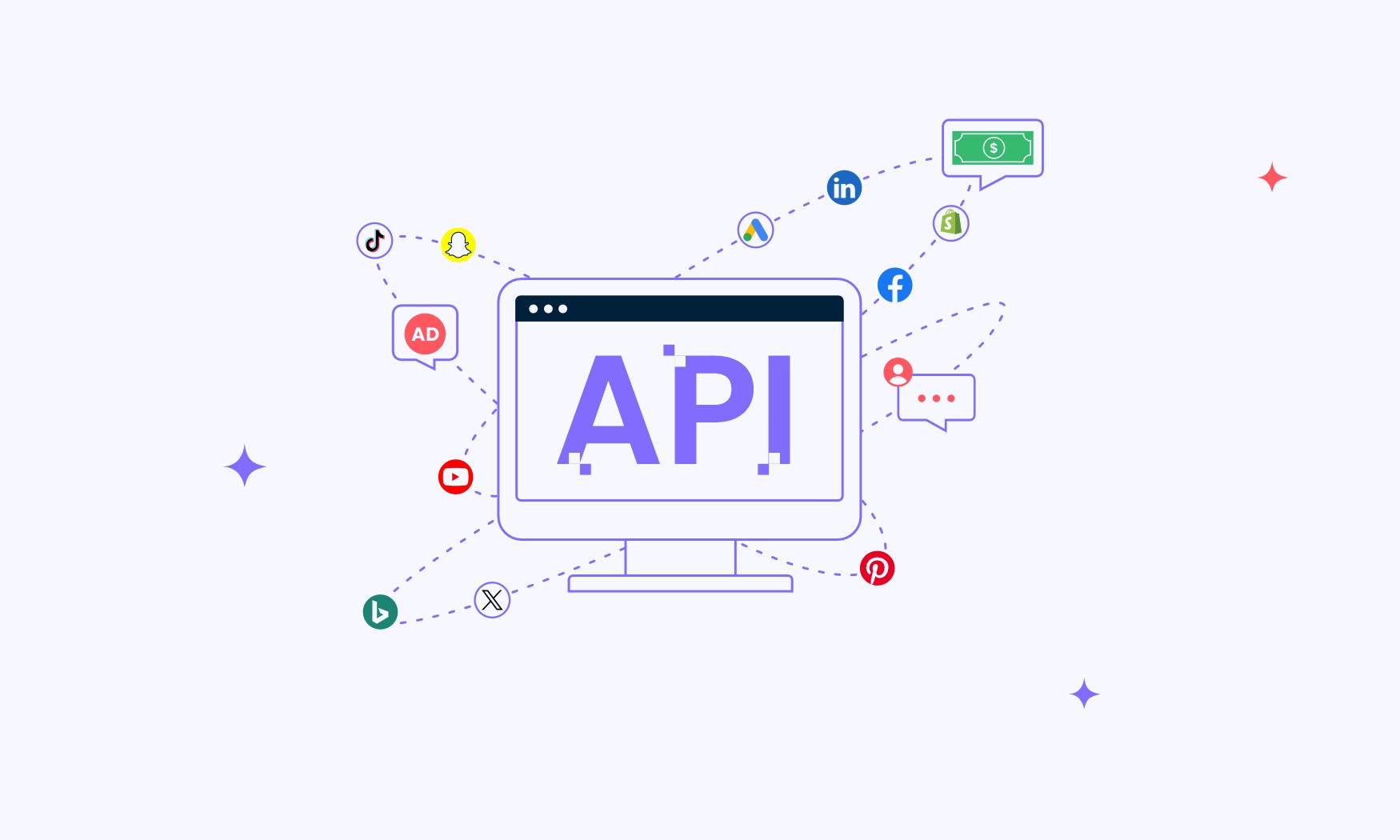
Conversion API Tracking Across Major Ad Platforms
Facebook Conversion API
Facebook’s Server-Side API provides tools for advertisers to directly report online and offline activities to Facebook, enhancing ad targeting and analytics. Reports indicate that combining Server-Side API with pixel tracking boosts customer action insights by up to 30%.
Google Ads Conversion Tracking
This feature works hand-in-hand with Facebook’s Server-Side API to amplify ad performance insights, a key factor in refining ad expenditures. Google’s research points to a potential 20% increase in the precision of conversion tracking for advertisers who adopt this approach.
TikTok
TikTok’s Server-Side API permits direct reporting of user interactions, like app downloads or purchases, to the platform for refined ad tracking. This ensures precise attribution and aids advertisers in tailoring campaigns with up-to-the-minute data, all while prioritizing user privacy.
Bing
Microsoft Advertising’s API lets advertisers monitor a broad spectrum of conversion activities, including those offline. It’s particularly beneficial for tracking conversions beyond the web, like phone sales or physical store visits, offering a comprehensive campaign analysis on Bing and its network.
Twitter’s API solution enhances the measurement of user actions following ad exposure, from engagement to site conversions. Leveraging Twitter’s Server-Side API allows for more accurate tracking, crucial in cookie-restricted settings, improving the assessment and optimization of campaign returns.
Unlock Insights!
Subscribe to our newsletter for exclusive tips on ad tracking, affiliate marketing, and targeted advertising strategies.
Pinterest’s API allows direct transmission of conversion events to the platform, circumventing traditional web tracking. This approach is invaluable for capturing conversions across devices or outside standard browsing, offering a fuller picture of Pinterest ad effectiveness.
Spotify
While primarily a music streaming service, Spotify has delved into advertising, providing a novel space for brand-audience interaction via audio ads. Specifics on Spotify’s Conversion API are sparse, but its investment in tracking tools indicates a move towards server-to-server tracking for better ad engagement and conversion metrics.
LinkedIn’s Server-Side API enables the direct sending of conversion events from business servers to LinkedIn. This is a boon for B2B marketers focused on lead generation and branding on LinkedIn, using S2S tracking for more precise attribution of actions like form fills and downloads while ensuring privacy.
Snapchat
Snap Pixel initially focused on client-side tracking, but now supports S2S tracking for more reliable conversion data, crucial when cookies face limitations. This shift underscores Snapchat’s commitment to offering dependable metrics, even in restrictive digital environments.
YouTube
As part of Google’s ecosystem, YouTube integrates Conversion API tracking through Google Ads, enabling precise conversion tracking from YouTube ads. This feature is pivotal for advertisers using YouTube to engage its vast audience for brand initiatives, unveiling how video content leads to tangible outcomes.
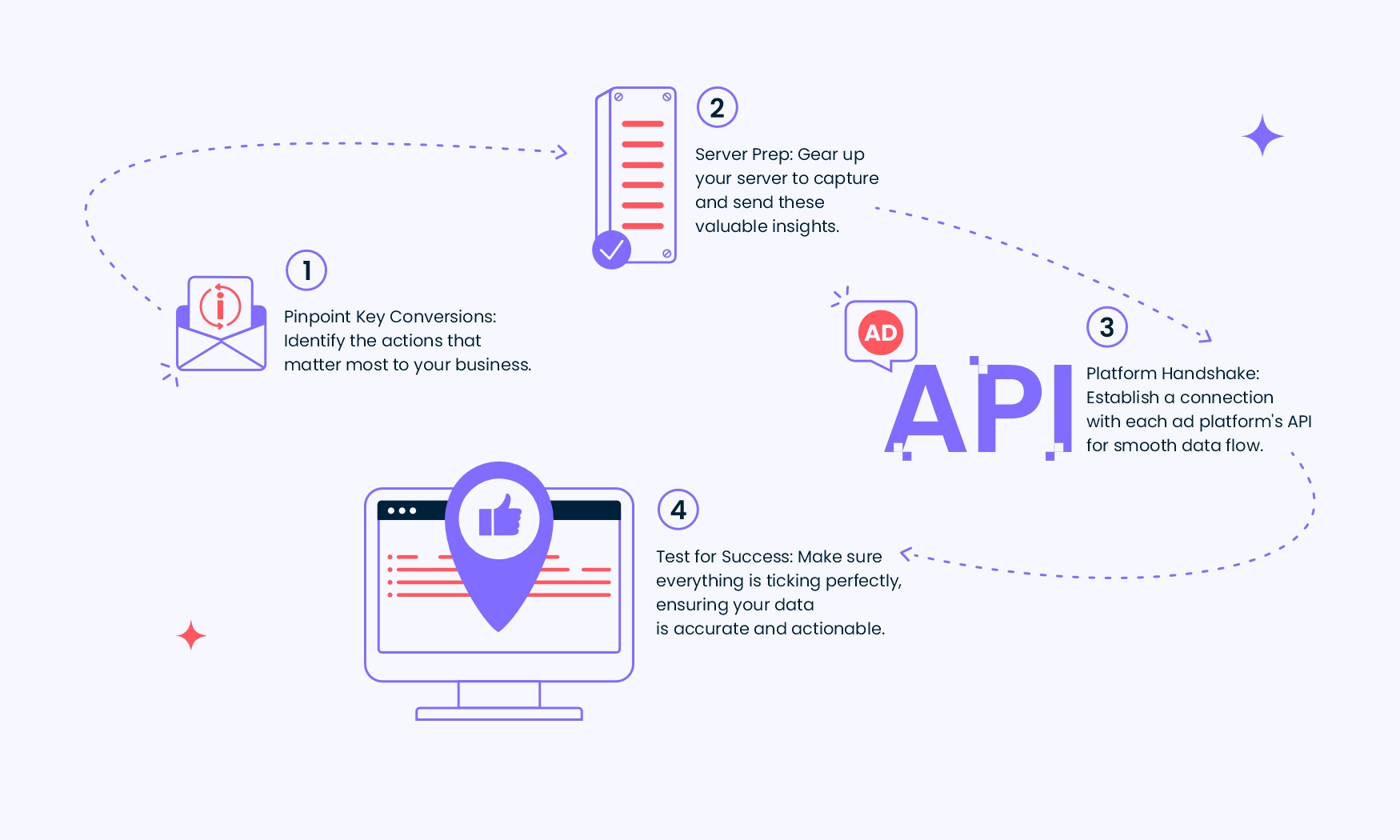
How to Set Up Conversion API Tracking
The conversion API journey involves a few key steps:
- Pinpoint Key Conversions: Identify the actions that matter most to your business.
- Server Prep: Gear up your server to capture and send these valuable insights.
- Platform Handshake: Establish a connection with each ad platform’s API for smooth data flow.
- Test for Success: Make sure everything is ticking perfectly, ensuring your data is accurate and actionable.
Best Practices for Maximizing Conversion API Tracking
To get the most out of Conversion API tracking, consider the following best practices:
- Continuous Monitoring and Optimization: Regularly review the data collected to identify trends and optimize your campaigns accordingly.
- Leverage Cross-Device Insights: Use the comprehensive view provided by Conversion API to tailor your strategies across different devices and platforms.
- Prioritize Data Privacy: Always adhere to data protection regulations, ensuring that your tracking practices respect user privacy.
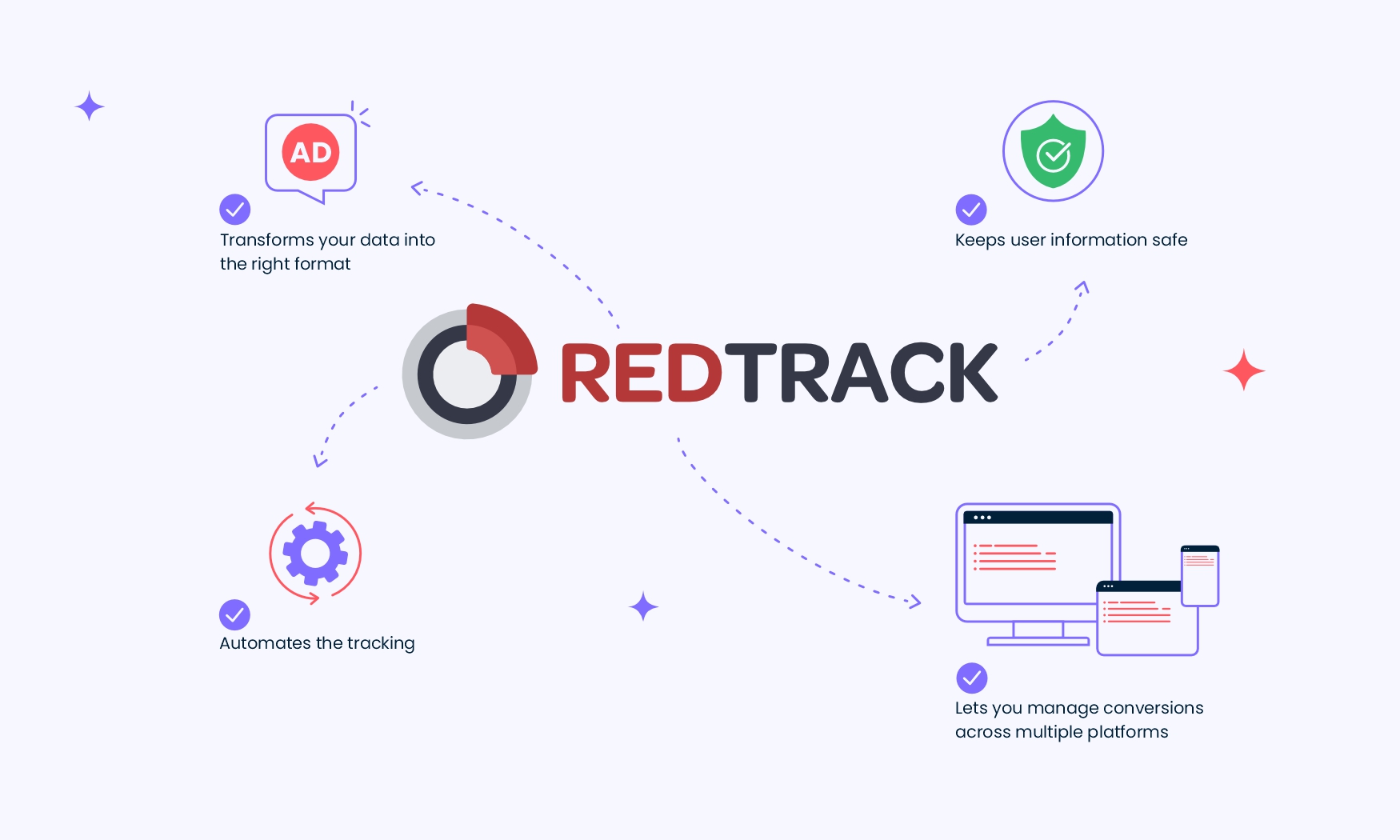
3d party solutions in setting up сonversion API integration
Integrating Conversion API into your advertising campaigns can seem daunting, but 3rd party solutions like RedTrack, Segment, and Zapier are here to make it easier. These platforms simplify the technical process, allowing businesses of all sizes to connect their servers with ad platforms like Facebook and Google Ads without needing deep technical know-how.
Here’s what makes Redtrack stand out:
- It automates the tracking of conversion events, cutting down on manual work.
- It transforms your data into the right format for each ad platform, solving a tricky technical step.
- It ensures your data is sent securely, keeping user information safe.
- It lets you manage conversions across multiple platforms from one place, giving you a clear overview of your advertising performance.
Plus, it keeps up with the latest in ad platform requirements and privacy laws, so your conversion tracking stays on point and compliant. By using third-party tools, you save time and resources, letting you focus more on refining your ad campaigns for better performance.
Conversion API tracking is not just a tool; it’s a paradigm shift in digital advertising. By offering a solution that marries accuracy with privacy compliance, it enables advertisers to craft more effective, data-driven campaigns. As we move forward, the adoption of Conversion API tracking across the digital advertising ecosystem is poised to become a standard, driving the industry toward more transparent, efficient, and user-friendly practices.



